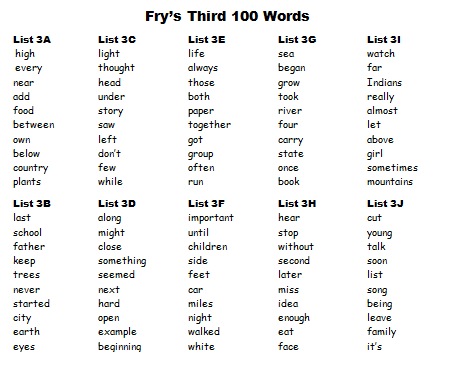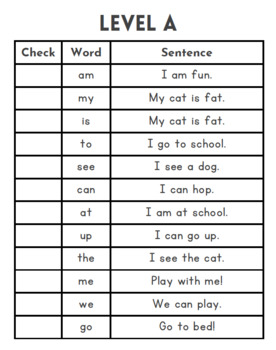
They’re perfect for learning sight words because of their instant and focused nature. Try a mix of methods to find the ones that work the best for your child.įlashcards are a study tool applicable to almost every subject. There are plenty of ways to practice at home. Studying first grade sight words can mean different things for different students. You will also find that most contain similar, if not the same, words. You may find that drawing from many different lists is useful. While Fry’s list is common and useful, there are many other lists of sight words for first grade that are equally beneficial. Despite this, your child needs to first have the basics in order to work up. It’s easy to think that more difficult words deserve more focus.Īfter all, they’re challenging and take some time to learn. Without these, your child will have poor reading fluency. The 1st grade spelling words that Fry compiled are the most commonly used words in the English language. He eventually published a book titled “Fry 1000 Instant Words.” According to his research, the words he compiled make up about thirty percent of written texts. Edward Fry expanded and refined this list. They are also referred to as “instant words.” The list came from a list of words previously compiled by Dr. What are Fry’s first 100 words?įry’s first 100 words is a list of sight words commonly referred to for teaching and practicing. If your child is no longer struggling with these words, they’re ready to learn some more. While these 100 are vital, knowing more can’t hurt. Spelling words are vital to your child’s reading skills. Your child should know the above 100 sight words by the end of first grade. How Many Sight Words Should a 1st Grader Know? It is also to cement their meaning, pronunciation, and structure in place. The goal of these first grade spelling words is more than simple recognition. For example, if your child cannot differentiate between “to” and “too,” they will face some confusion. Despite this, they are pronounced very differently.Įven more important are the differences in their meaning. For example, “though” and “through” look nearly identical. Walk, want, was, water, were, what, when, where, whoĪs you can see, many of these words are similar in structure, but not in pronunciation.The, their, there, they’re, they, thought, through, to, too, two.Said, saw, school, should, some, something.Of, off, often, on, one, only, other, our.Many, might, more, most, mother, might, move, my.A, about, again, air, all, along, also, another, answer, any, are, around, away.

List of 100 1st Grade Sight Words (or 1st Grade Spelling Words) The ability to identify and understand commonly used words impacts their ability to read as a whole.


Developing word recognition skills is extremely important. Sight words practiced this early are generally basic and commonly found in any written text.

Rather than learning as many words as possible, students practice basic words and phrases in first grade. Familiarity and fluency with sight words mean that your child will not have to sound them out or ask for help.Īs your child develops their reading skills and practices different words, their vocabulary will expand. Sight words, also called spelling words, are words that a reader recognizes immediately. 1st grade sight words are an alternative name for 1st grade spelling words and are what helps 6 and 7 year-olds become faster, stronger readers. Sight words will create the groundwork on which to build further, more complex reading skills. Getting sufficient practice with these words is increasingly impactful as your child moves through first grade. How Many Sight Words Should a 1st Grader Know?įirst grade sight words are important for ensuring your child has the reading skills they need.List of 100 1st Grade Sight Words (or 1st Grade Spelling Words).


 0 kommentar(er)
0 kommentar(er)
